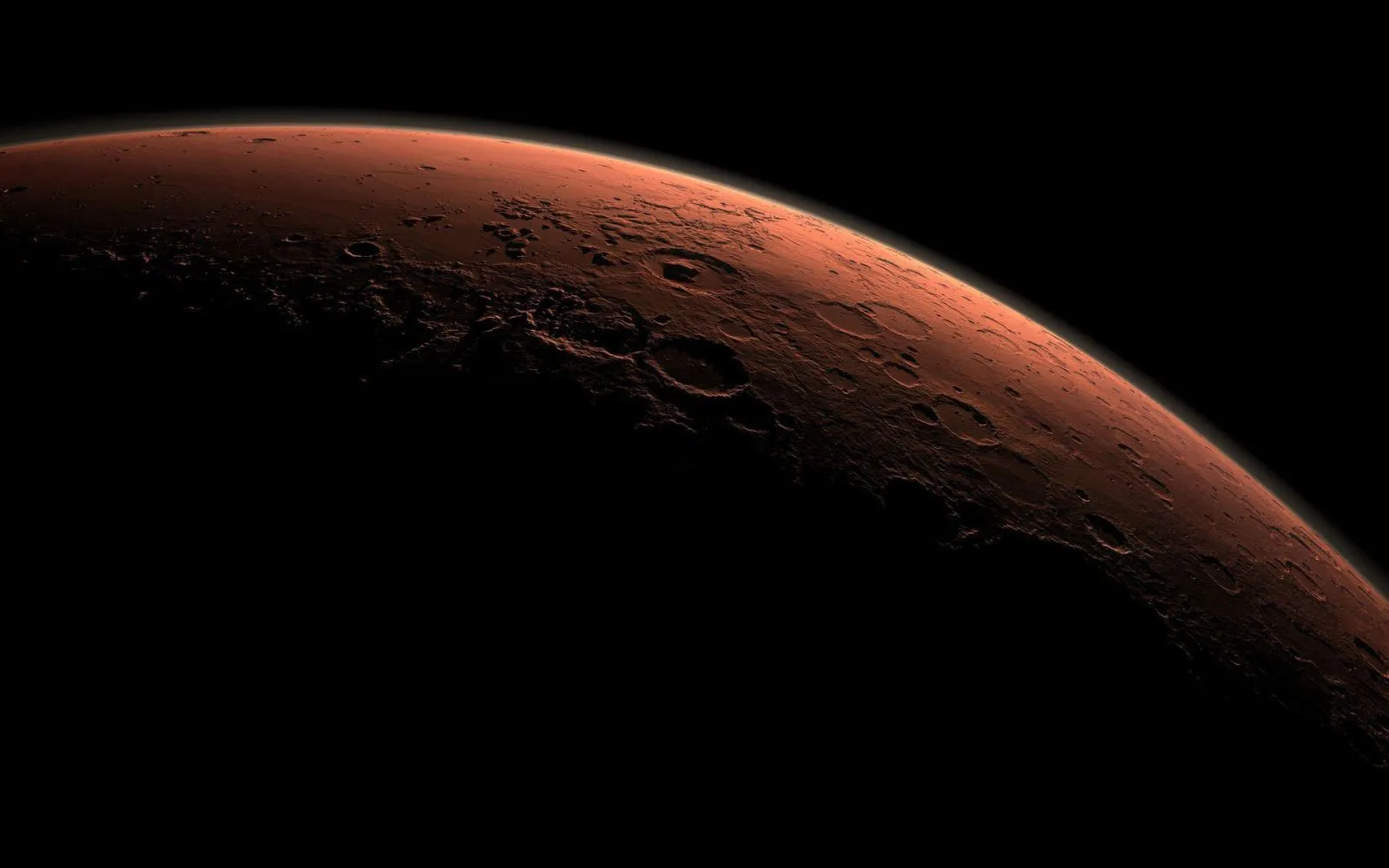Life on Mars may currently exist, under this condition 🔴
Published by Cédric,
Article author: Cédric DEPOND
Source: Comunications Earth & Environment
Other Languages: FR, DE, ES, PT
Article author: Cédric DEPOND
Source: Comunications Earth & Environment
Other Languages: FR, DE, ES, PT
Follow us on Google News (click on ☆)
Scientists are considering the possibility of photosynthetic organisms hidden beneath the Martian ice. A recent study hypothesizes that underground pockets of water could foster such development.

Image Wikimedia
The surface of the Red Planet, inhospitable today, was not always barren. Rovers have revealed the presence of ancient bodies of water, conducive to the flourishing of life forms.
Despite ultraviolet rays, which are potentially destructive, research led by Caltech scientists has highlighted a scenario where microbial life could survive. Simulations suggest that Martian ice could create a favorable environment.
The thickness and composition of the ice are essential in determining the viability of life. If the ice contains between 0.01% and 0.1% dust, organisms could exist up to 15 inches (38 centimeters) beneath the surface. In purer ice, life could reach depths of up to 10 feet (3.1 meters).
Liquid water, essential for life, would be generated by the melting of ice pockets. This phenomenon would preferably occur in areas away from the poles, where the warmth of the sun's rays could reach the ice.
These conclusions offer new hope for future missions. Scientists wish to explore the identified sites to detect evidence of current life on Mars.
Similar observations on Earth, such as cryoconite holes, show that such habitats exist. They demonstrate the ability of dust to trap heat, creating water pockets where microorganisms can thrive.
Researchers, relying on computer models, are planning expeditions to map these promising regions. They hope to find biosignatures there, potential indicators of life.
The tropical latitudes of Mars, favorable for these explorations, remain yet to be fully explored. Recent work may herald the beginning of a new era in the search for extraterrestrial life.
What conditions favor life on Mars?
The search for life on Mars focuses on key elements: liquid water and light. The presence of water is essential for organisms, while light enables photosynthesis, the process through which some life forms produce energy.
The recent study indicates that water could exist in the form of pockets within the Martian ice. For this to happen, the ice must be dusty enough to filter out harmful ultraviolet rays but not too dusty so that light can penetrate and photosynthesis can occur. This could create environments conducive to microbial life, similar to some extreme habitats on Earth.
What is a cryoconite hole?
A cryoconite hole is a depression or hollow formed in ice, primarily observed on glaciers. It occurs when particles of dust and dark sediments settle on the surface of the ice. These particles absorb the heat from the sun's rays, causing the surrounding ice to melt.
This phenomenon creates pockets of liquid water under the ice, providing a habitat for microorganisms such as algae and bacteria. These water pockets play an important role in the local ecosystem, as they provide the necessary conditions for photosynthesis and the development of life, even in extreme environments.